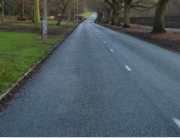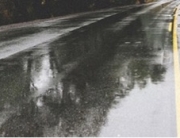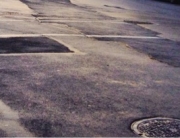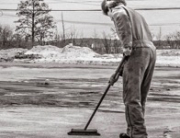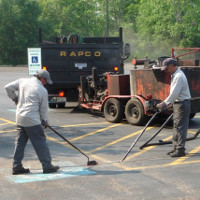 Franklin Park, IL and the greater Chicago area sees a variety of weather throughout the year. We often have bitter cold during the winter and scorching heat during the summer. Autumn and spring months vary greatly depending on weather patterns from all different directions. Our city’s paved parking lots and roads go through a lot of freeze-thaw, and are tortured by a great amount of heat during the summer. Asphalt maintenance, while it can be an annoying hindrance to normal traffic patterns, is required in order to maintain properly functional roadways and parking lots.
Franklin Park, IL and the greater Chicago area sees a variety of weather throughout the year. We often have bitter cold during the winter and scorching heat during the summer. Autumn and spring months vary greatly depending on weather patterns from all different directions. Our city’s paved parking lots and roads go through a lot of freeze-thaw, and are tortured by a great amount of heat during the summer. Asphalt maintenance, while it can be an annoying hindrance to normal traffic patterns, is required in order to maintain properly functional roadways and parking lots.
Asphalt Repair
Asphalt repair can be broken down into two categories; permanent and temporary. Permanent asphalt repair usually involves tearing out the old, damaged asphalt, and replacing it with new. Temporary asphalt repair is generally less invasive, less time consuming, and doesn’t last nearly as long. Here are some temporary asphalt repair methods that save time and money:
Crack Sealing: Cracks are essentially areas of failed asphalt. They’re usually caused by water or over time by the freeze-thaw effect. Repairing cracks involves routing out the area to clean the edges and inject sealer into the routed out area. Routing is absolutely a necessary part of the crack sealing process, because it allows the sealant to properly penetrate to all areas of the crack. Cracksealing material is then poured over the entire crack with an overlay of a couple of inches to limit the material from being scraped away by snow plows.
Pothole Filling: Potholes are also areas of failed asphalt caused by excessive water. The water, however, is likely underneath the bed of dirt which supports the asphalt. Crocodile cracking is the very first sign of potential pothole formation. This type of cracking earns its name because of the crocodile skin type appearance. You may even notice moisture coming from the cracks. Proper maintenance can delay the formation of potholes, but once they’re formed, repair is the only option.
Filling a pothole follows much the same process as crack sealing. The area is routed to allow the sealant to penetrate properly and then filled with asphalt and smoothed to prevent damage to vehicles. This is a temporary fix until the area is repaved.
Why Temporary Fix over Permanent Repair?
Permanent repair requires good weather. We don’t always have good weather here in the greater Chicago area. Winters are cold, summers are hot, and we rarely see much in between. We often have to use temporary fixes to prevent damage to vehicles and further damage to the surrounding asphalt until we are able to institute a more permanent repair.
Temporary repairs are considered part of asphalt maintenance. Maintenance is extremely important and extends the life of a paved surface. If companies dug up and replaced their paved parking lot every time there was a crack or small pothole, parking lots would be in a constant state of pavement repair. Temporary fixes save both time and money.



